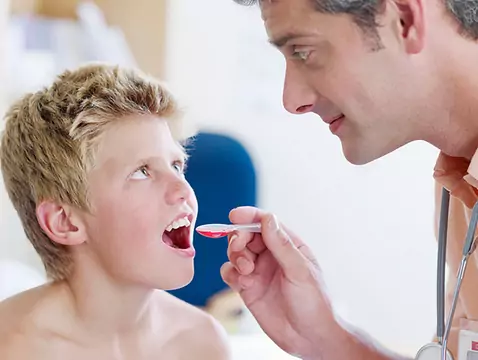Type 2 diabetes is a disease that develops quietly over many years without producing any obvious symptoms. Fortunately, with type 1 diabetes, the symptoms usually appear quite quickly and are so pronounced that they are hard to miss. This does not change the fact that it is essential to diagnose the disease quickly so that appropriate treatment can be implemented. This is particularly important because the potential complications of the disease are extremely dangerous. Particularly in adolescence and adulthood, which is when the incidence of type 1 diabetes peaks.
How to make a diagnosis of type 1 diabetes?
In addition to a thorough examination of the patient, taking a medical history and identifying any suspicious symptoms, laboratory tests are the most important tool in the diagnosis of type 1 diabetes. Those routinely performed in the process of making a diagnosis of childhood and adolescent diabetes include:
- immunological tests - it is this type of diagnosis that allows the diagnosis of the preclinical stage of diabetes. It is characterised by the presence of anti-insulin antibodies (IAA), anti-insulin antibodies (ICA) and several less important groups of antibodies.
- determinationof insulin and C-peptide to assess beta-cell secretory reserve.
- determination of fastingblood glucose values (glycaemia) and OGTT (after a glucose load). Norms are at the same levels as for the diagnosis of type 2 diabetes. Fasting glycaemia <100mg/dc. OGGT test <140 two hours after glucose administration.
- assessment of insulin resistance - is assessed from a mathematical formula where we examine the ratio of insulin concentration to fasting blood glucose concentration. If this ratio is more than 0.3 we speak of insulin resistance.
Treatment of type 1 diabetes
The treatment of type 1 diabetes is, unfortunately, more complicated than the treatment of type 2 diabetes. Because insulin-dependent diabetes most often occurs during the developmental years (4 to 18 years of age), it is extremely important to keep glycaemic values within the normal range (ideally below 120 mg/dl). Glucose (especially when it exceeds 180mg/dl) has a toxic effect on many systems in our body. Taking all factors into account, the primary goal in the management of type 1 diabetes is to ensure that the child has normal psychomotor development and a quality of life similar to that of healthy peers, accompanied by the maintenance of glycaemia in the range close to normal mentioned earlier.
Any child with type 1 diabetes should, from the time of diagnosis, be treated in a specialist unit focused on endocrine or diabetes diseases of childhood. Such a unit should ensure that the child and their parents have access to a whole team of specialists, which includes a paediatrician, a dietician, an educational nurse and a psychologist. This is very important because, in the course of treating type 1 diabetes, it is most important to educate the patient and his family about how to manage the disease.
Unfortunately, there is no causal treatment for insulin-dependent diabetes. The only treatment is de facto substitution of insulin, which is no longer produced in the pancreas. The recommended treatment model is the so-called intensive insulin therapy - a method that involves repeated injections or continuous subcutaneous infusion of insulin.
- multiple injection model - this type of treatment for type 1 diabetes depends primarily on continuous measurements of the patient's blood glucose. Each patient should take at least six blood glucose measurements per day and then, based on the measured blood glucose values, the appropriate dose of insulin is administered using a pen (insulin injector).
- insulinpump-based treatment model - this is the most effective and closest to the natural insulin secretion cycle form of treatment. The insulin pump automatically, 24 hours a day, administers insulin subcutaneously in small doses. The patient additionally administers so-called 'boluses' after each insulin measurement (at least six times a day), i.e. additional amounts of insulin to lower the glycaemic level after a meal.
However, the general principles of treatment of any type of metabolic disease should not be forgotten. The patient's diet should be based on products rich in fibre, vitamins, minerals. The consumption of simple sugars (e.g. sweet drinks) should be avoided. This type of readily available sugar is reserved only for cases of insulin overdose, which leads to hypoglycaemia (glycaemia below 60mg/dl). It is also very important to remember to exercise regularly.









